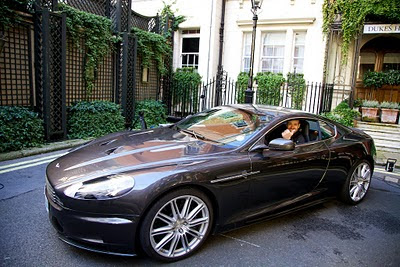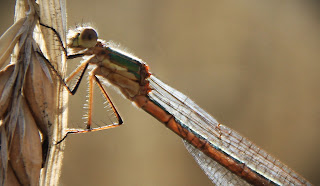Many London boroughs are happy to encourage film makers to make films in their territory and they go head-over-heels to help and see that you get the support that you need. But some of the major councils require a fee for you to shoot, so always make sure you have checked out with the local council where you are planning to shoot and they will supply you with the right information, licences and fees.
I shot a short film in Westminster last year and it was at the same location that they had filmed one of the Bond films (Quantum of Solace) earlier.
The local film council are used to conducting large location fees for these sort of films and aren't overly fussed with worrying about films on a tight budget. If you have planned to shoot in a popular spot, and not checked out the council fees, you could end up blowing your budget on fees and not on filming. Of course I hear you say 'well if I am on a budget, then why not shoot gorilla style and shoot it anyway without them knowing?'
Well to be honest, that is an option...and there are lots of people out there grabbing the shots that they need without the correct permission in a snatch and grab manner. But it is a risk that sometimes just isn't worth taking. If any accidents happened while you were filming, then you should not have legally been there in the first place and so insurances would be void (don't talk to me about filming gorilla style and not having insurance...there is a difference between fast paced gorilla shooting, getting the job done and getting home...then there is just plain amateur night).
Also, the police are uber-sensitive about shooting in any restricted areas. So even if you have the correct licences, you need to be prepared to stop and pull them out every 5 minutes. Also expect to have a film council inspector drop by to check you are acting accordingly and not blowing up a building when you only told them you were going to gently dust the area in feathers. They are very strict and you must adhere to what has been agreed with them (we nearly got shut down on one occasion when an inspector said that the camera crane was...and I quote, 'larger than I imagined', even though we had given the specific dimensions and footprint of the crane).
But if you DON'T have a licence when you are stopped...well then you are in a bit of trouble. The police have the powers to shut down the entire shoot immediately and indefinitely, plus you could be looking at a hefty fine...but more importantly than that, if you were ever wanting to be a serious film maker, your reputation will be tarnished forever in an industry that is a very tight-knit community. Still worth it?
Last month I had the distinct feeling of deja-vu as I was again asked to film in central London with a Bond connection. I was asked at short notice to film two of the original Bond cars, the Aston Martin DB5 from Goldfinger & Thunderball and the fantastic Aston Martin DBS which was from Quantum of Solace.
It sounded like a fantastic shoot to be involved in, but one of my first questions was...'do we have the licence?...Yes? Great, lets go for it!'
The next day (day of the shoot) we had a problem with the licence. Someone had not put through the correct paperwork and we now had 2 original Bond cars in the centre of London with a full film crew and none of it was legal! At this point I was none the wiser and believed that the licence was on its way so I headed off to prep our first location. There were two police officers conveniently sat in a patrol car at the exact location I wanted to shoot. So I asked them if they would mind moving and that we had our licenses on the way for them to see. When they found out we were shooting the original Bond cars, they seemed more interested to see the cars than the licence.
Finally we had shot on location one and I had been too busy to see any licence. I just assumed that we had it and we were good to move on. We started to shoot at the back of Admiralty building and immediately another police car appeared. We were asked to produce the licence and so I rang the producer, asking him to bring it over. When they saw the two Bond cars they just got back in the police car and drove off...I can only think they also assumed that such a high profile shoot would naturally have the correct licences in place. Add to that my complete confidence when talking to them (as I honestly believed we had it) and they were happy.
A little later on and we were doing an interview with Royal Navy Commander Northwood.
He decided to stay with us for the journey through London and then on to Mi6. We didn't realise at the time what an asset he would be to us, but it was around this time that it was seeping in...we didn't have a permit to be here!
He wanted to see licences there and then...and guess what, we couldn't provide them. But fortunately we did have with us a Royal Navy Commander (real life Bond) and 2 armed secret service agents! I implore you if ever you are pulled over by the police to carry a Navy commander and 2 secret service agents with you at all times as the impact of these guys will make any ticket bearing officer/warden disappear in an instance. Joking aside, we were very,very lucky on this shoot, and we could have been closed down at any point (and rightly so), which would have wasted everyones time, effort and a whole day of filming costs.
So what have I learned from this? Always make sure you have the legal right to be at your location and always SEE (and check) your licence/permits. Then there can be no mistakes and you will be safe in the knowledge that you are actually allowed to be there.
The pressure of shooting a film on time and on budget is big enough, you don't need to add pressure to the shoot by worrying about being shut down. Failing that, try shooting something with a value in excess of £7m and hope that the mere spectacle of it will beguile and dazzle the law long enough to get your filming done!
All the info you could ever want when filming in London can be found at www.filmlondon.org.uk/filming_in_london
































































